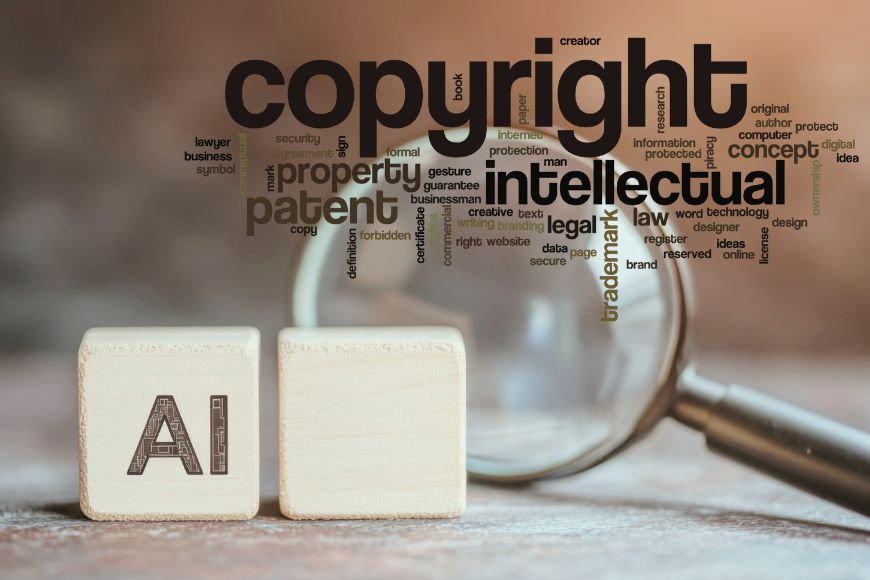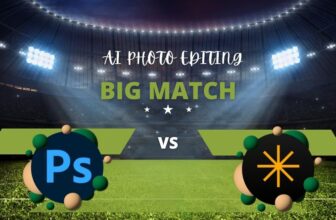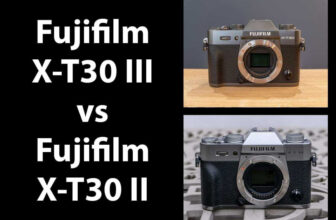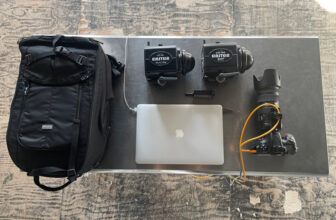
Generative AI is becoming a powerful creative tool. It’s no longer just a novelty; it’s become something that professionals use in their daily work.
From visual art to music, books, graphic design, and more, generative AI is used in a wide range of creative fields.
While this has opened up a world of possibilities, it also raises some questions. Who owns AI-generated works?
The answer is not easy, but I decided to do some research and navigate this complex issue to offer you some clarity.
In this article, I explore the most renowned cases regarding copyright on AI-generated artworks. I also lay out the key factors that influence authorship and give you an overview of the legal landscape across countries.
If you’re curious about this fascinating topic, join me as I unpack the complexities of who really owns AI-generated art.
Can I Call AI-Enhanced or Generated Art My Own?
Whether you can truly call AI-enhanced or AI-generated art your own isn’t an easy question to answer. At first, we saw rulings that said AI-generated work couldn’t be copyrighted.
However, this is slowly changing as an increasing number of artists and creatives incorporate these tools into their work, and the law is adapting accordingly.
Right now, the matter is not straightforward, and I don’t think there will be a clear-cut answer soon. In this article, I’ll share why I believe this.
Remember that this article is for informational purposes and does not constitute legal advice. I’ve done my best to research and explore the complex and evolving world of generative AI copyright. However, I’m not a lawyer.
If you’re dealing with any issues regarding copyright, please consult a qualified attorney or legal consultant.
What is AI-generated Art?
The definition of art is complex enough on its own, let alone adding the AI generation component. So, I won’t be getting into it here, as it goes beyond the main topic that we’re tackling.
Instead, I’ll clarify what I mean when I use the term specifically in the context of this article. Here, I won’t be discussing AI-generated art only in the sense of artworks.
From now on, I’ll be referring to any media content, such as images, videos, illustrations, etc., that were created using AI generators, regardless of their final scope.
So, they could’ve been made as artworks to be exhibited, collected or sold, but also to be used in advertising, social media, magazines, and so on.
What Has Happened So Far?


There have been many attempts to copyright AI-generated art since generative tools were released.
One of the first famous cases was Tèâtre D’Opéra Spatial by Jason Allen. The author used Midjourney as the AI generator platform. Then, he used Photoshop for retouching and Gigapixel AI for upscaling.
Allen input 624 prompts and iterations into Midjourney to direct the actions of the program. However, the Board considered that the results came from how the system processed Allen’s prompt and therefore he could not be considered the author.
As you can see in the decision letter from the second request for reconsideration for refusal, the work is therefore considered to have “more than a de minimis amount of content generated by artificial intelligence.”
Another high-profile case is that of Krys Kashtanova. Back in September 2022, Kashtanova submitted her AI-assisted graphic novel Zarya of the Dawn for copyright.
At first, the copyright was granted. However, upon review, the decision was changed, and she was given only limited copyright protection.
The limitation lay in the fact that the AI-generated images were not covered. The copyright includes only the text and the arrangement of the pictures. This is because the interactions with Midjourney weren’t considered enough to prove human creativity.
In 2023, Kashtanova and her legal team tried to understand where the boundary was and submitted Rose Enigma for copyright. This was an AI-generated image, not from a text prompt but from her hand-drawn sketch. This time, she used the platform Stable Diffusion.
Again, the copyright was granted partially and only concerned the sketch she used as input, but not the AI-generated result.
That same year, a different case in China made headlines. The Beijing Internet Court, ruling on a copyright infringement dispute, granted intellectual property protection to a designer who had used Stable Diffusion to create a work.
The court examined how the designer crafted every prompt and fine-tuned every detail of the final output. It then decided that there was enough originality and subjective input into the process that it could be considered the result of human creativity.
In February 2025, the U.S. Copyright Office granted copyright protection for the first time to an artwork created solely with generative AI. The artwork is called A Single Piece of American Cheese, and it was created by Kent Keirsey using Invoke.
The author is, in fact, the CEO of Invoke, and he generated the piece to demonstrate that sufficient human creativity can be involved in an AI-generated artwork to be worthy of protection. To do so, he recorded the entire process.
You can watch Kent explain the importance of this ruling for all AI creatives and how he made it possible on the Invoke YouTube channel.
The team at Invoke is publishing very useful material to help artists and companies with their copyright claims.
The Legal Landscape Around the World


Every country has a different copyright law and multiple regulations, legal precedents, and further documents to consider. It would be impossible for me to cover all of it in this article.
So, I’m including a few examples of how countries are tackling this new challenge around the world to provide an overview of the current situation.
US law
The U.S. Copyright Office is in charge of determining whether they grant copyright protection to an author over a specific creation. It’s possible to grant partial copyright if only one part of the artwork fills the requirements.
They operate following the Copyright Act. Here, the word author is not defined, but it has been determined that it can only refer to a human.
However, in the 2025 Copyrightability Report, they detail the types of human contribution in AI-generated outputs and analyze whether these are sufficient to constitute human authorship.
The determination will be judged case-by-case using the current legal framework, and they’re not considering any new laws in this regard.
EU laws
While each country in the EU has a certain level of autonomy, the EU sets the standards through directives.
In the InfoSoc Directive (2001/29/EC), it is established that copyright protection can be granted only to human authors.
This was confirmed by the Court of Justice of the European Union through many cases where copyright is linked to the free and creative choices of the author – something that only humans can do.
While there aren’t yet any laws specific to AI-generated creations, current laws focus on human authorship, but they keep the door open for partial protection of an artwork.
UK laws
The Copyright, Designs and Patents Act 1988 is the primary document that you should refer to in the UK for these issues.
Since it was published in 1988, it doesn’t specifically address AI-generated works. However, it does consider computer-generated works.
This means that within the British legal framework, there’s the option to copyright an artwork without a human author. Although the copyright in these cases is shortened to 50 years, as opposed to the 70 years that a human receives.
According to the Author’s Alliance, this section of the act has barely been used to establish legal precedents. Plus, it’s unclear whether it can be applied to LLM (large language model) technology.
However, in 2026, things may change due to some expected reforms in this matter.
China laws
China is one of the countries that has invested most heavily in AI technology. But, how does its legal framework protect its users?
According to the Copyright Law of the People’s Republic of China, “the natural person creating a work is the author.” It also considers a legal person or an incorporated organization as a possible author.
This means that AI can’t hold the authorship of an artwork.
However, when sufficient human creativity went into the creation of the artwork, even if the only tool was an AI generator, copyright can be granted.
This was proved in 2023 when the Beijing Internet Court granted copyright to an author who was claiming copyright infringement when someone used a picture he generated using Stable Diffusion.
Hence, the copyrightability of an AI-generated piece is decided on a case-by-case basis.
Factors Involved in AI-Generated Art Ownership


Copyright has always been a complex issue. When you throw generative AI into the mix, things become even more difficult.
That’s why the few cases deciding whether an author who used these tools can claim copyright or not have had to weigh up many different factors.
Here are a few of the key points that have come up in the case studies I found.
Level of human involvement
This is one of the central points regarding whether or not an AI generative work is copyrightable. Needless to say, automated or autonomous generation is not subject to copyright.
Things are different when there’s input from the user – whether this is a text prompt or an original work like a photo or a sketch submitted as a reference.
A simple prompt won’t make you the owner of the work. However, complex prompt engineering and multiple iterations that fine-tune the results in order to fully express your unique vision may be enough for a copyright.
The issue is that we don’t know where the line is that defines when there is enough human interaction for it to be copyrightable. So, things are decided case-by-case.
In 2022, Jason Allen was denied copyright over the piece Tèâtre D’Opéra Spatial, despite having completed 624 iterations on it. Instead, A Single Piece of American Cheese, by Kent Keirsey, was a successful case because his iterations demonstrated enough human involvement.
So far, there are only a few examples where the copyright claim was successful. Some of them were only partial, but it’s these baby steps that are laying the groundwork for the future of all creatives.
The platform you use
Each generative AI platform has different terms and conditions. You need to review them carefully before you decide to use one or the other to create your work.
In the Li Yunkai case in China, the court first established whether there was enough human input for the work to be considered original. After doing so, it considered the rights of the AI generator developer.
In this case, the work was generated with Stable Diffusion, where the license explicitly says that they don’t claim rights in the output content.
Some platforms, such as Recraft, won’t grant ownership to the work generated using free credits offered to try their product. Other ones, like Midjourney, require that companies with over $1M annual revenue use a Pro or a Mega membership to be considered owners of the generated content.
Please note that copyrights are not the same as licensing. Editorial and commercial use are types of licenses that are different from ownership.
While it’s essential to be aware of the rights you have as a user, it’s also necessary to consider the rights you’re granting the platform.
When using Midjourney, you’re giving them perpetual, worldwide, irrevocable rights to distribute, sublicense, reproduce, and otherwise use the work you generate.
So, I know it’s a pain, and most of the time we agree to terms and conditions without reading them, but they have a significant impact on copyright claims.
Derivative work vs transformative work
Generative AI platforms are trained using millions of existing works. Then, by definition, whatever you create using an AI generator is either a derivative work or a transformative one.
It’s worth noting that many companies are not yet clear on whether they infringed copyright laws by using the data they collected to train their AI tools.
However, even if you use a platform that’s 100% in the clear, you still need to generate transformative content. In other words, if your output is too similar to some of the works that were used to train the AI model, then you can’t claim copyright.
To use one of the cases I mentioned in this article, let’s take the A Single Piece of American Cheese example. The owner secured the copyright of the final work, but not from the individual pieces that compose it.
So, theoretically, you could use a piece of that artwork as a starting point for your own work without infringing on their rights.
In Conclusion
Generative AI is evolving rapidly, and the legal framework around it hasn’t caught up. So, there aren’t yet any laws that specifically address AI-generated artworks.
However, most countries are realizing that there can be enough human creativity in the creation of such artworks to be considered copyrightable.
So far, the whole world is moving on a case-by-case basis with significant differences from one location to another. However, this may change in the future, but there are still many factors involved.
In any case, it’s best to seek legal advice if you’re worried about protecting your work or before using someone else’s work.
We’ll be keeping an eye on this space, so stay tuned for updates as the legal and ethical considerations of AI continue to evolve.
Credit : Source Post






